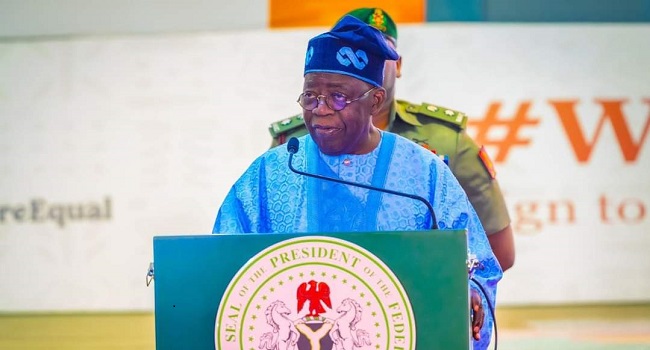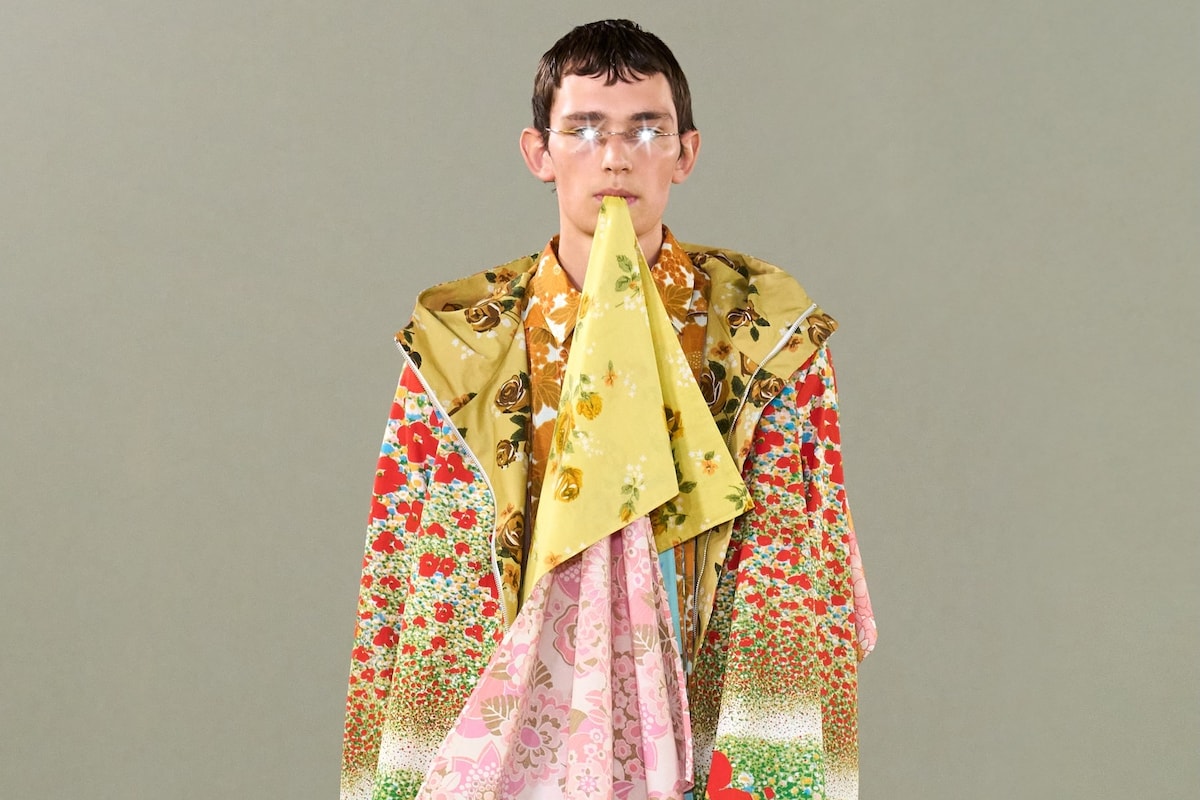Colm Dillane called it his “most poetic” collection yet. He wasn’t exaggerating. The Boy Who Jumped the Moon embodied childhood — the creativity, naiveté, and imagination particularly. Not in the sense of nostalgia, but in that serious wonder only kids can get away with. The belief that if you jump high enough, something impossible might just happen. That sentiment ran through the clothes like a thread: tailored jackets printed with moonscapes, school-uniform silhouettes gone slightly off-course, trousers that floated mid-air, and you feel like you’ve stumbled into Saint-Exupéry’s Le Petit Prince.
There was a strange, beautiful mix of ambition and innocence — collars scribbled with text, garments cut to look like notebook sketches, patterns straight out of a fevered dream. Some pieces looked like they belonged in an animation cell: crayon colours, swirled lines, the kind of graphic weirdness that could be either comic strip or fine art. A child’s drawing, rendered in couture proportions basically.
One look was blown away by an imaginary wind, another came together as if crumpled drafts were stitched together, and another was quite literally a painter — perhaps the most evocative and representative of the whole concept.
And then came the car. The Mercedes-Benz collaboration was a sculptural object, a machine from a comic book you wanted to live inside. Chrome slingshot, rally-style roof rack, balloon fins — it looked like it had been built by a genius eight-year-old with access to a welding studio. Dillane called it “a superhero on wheels.” It made sense, but it made no sense. It was perfectly on theme.
From that came the limited-edition capsule: 13 pieces that mashed mechanic gear with Dillane’s painterly touch. Grease-stained jumpsuits reimagined in crisp tailoring. A KidSuper kiss embroidered where you’d least expect it. Even Puma showed up again, this time with co-designed football kits for the 2025 FIFA Club World Cup. And in the most surreal crossover of the night, Papa John’s entered the scene via a collaborative hot bag celebrating their Croissant Pizza. It sounds absurd — and it was — but in Dillane’s hands, even that became oddly charming.
But what made this show different wasn’t the stunts or the cameos. It was the emotion behind it. That moment when you’re trying something huge and you’re not sure if you’ll make it — but for a second, you’re suspended. “When you’re little, you think everything is possible,” Dillane wrote. “You try things without knowing if you’ll succeed — and even when you fail, you’re still in the air for a second.”
There’s a kind of radical sincerity in what Dillane does. He never hides behind irony. He believes in big feelings, weird art, big dreams. And this season, he gave us all three, on a stage that reminded us how surreal fashion can be when it stops trying to be cool and just dares to feel something.
Discover the collection here.
photography.
words. Gennaro Costanzo













